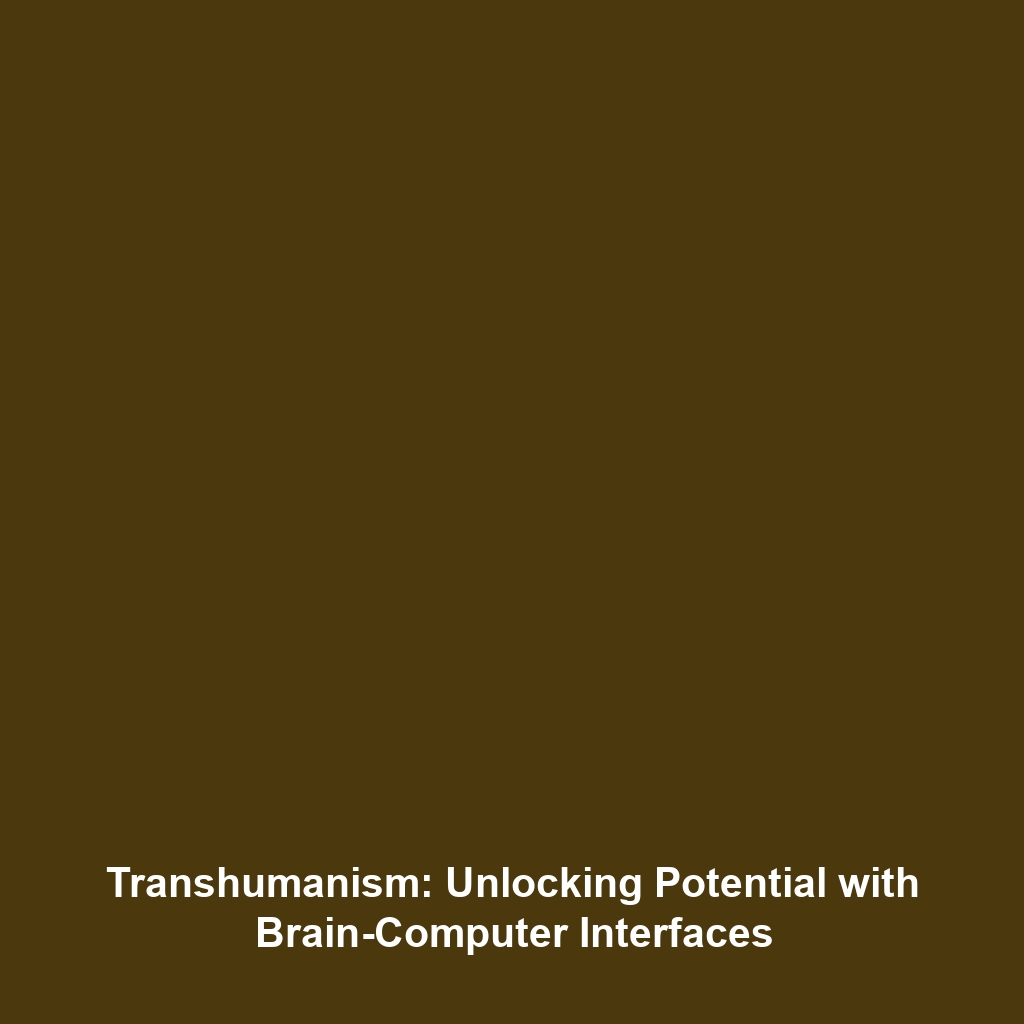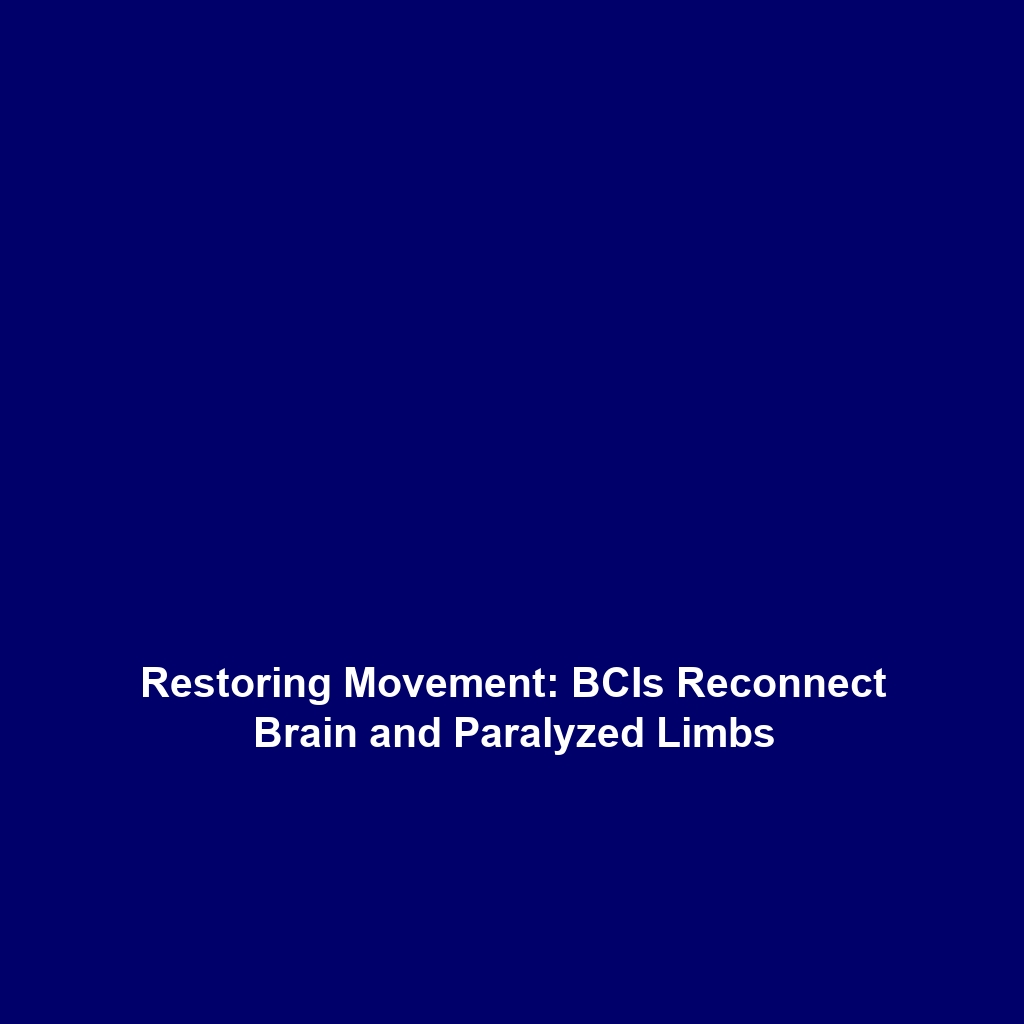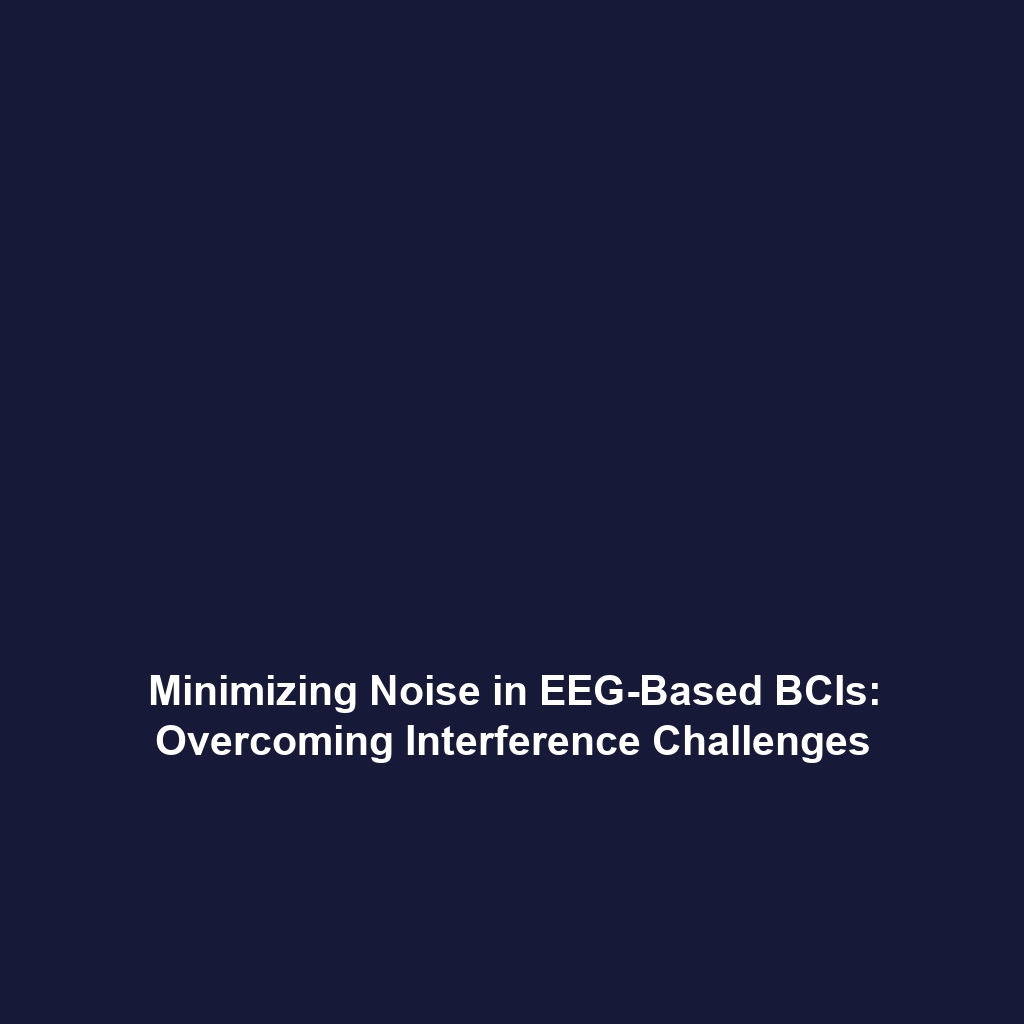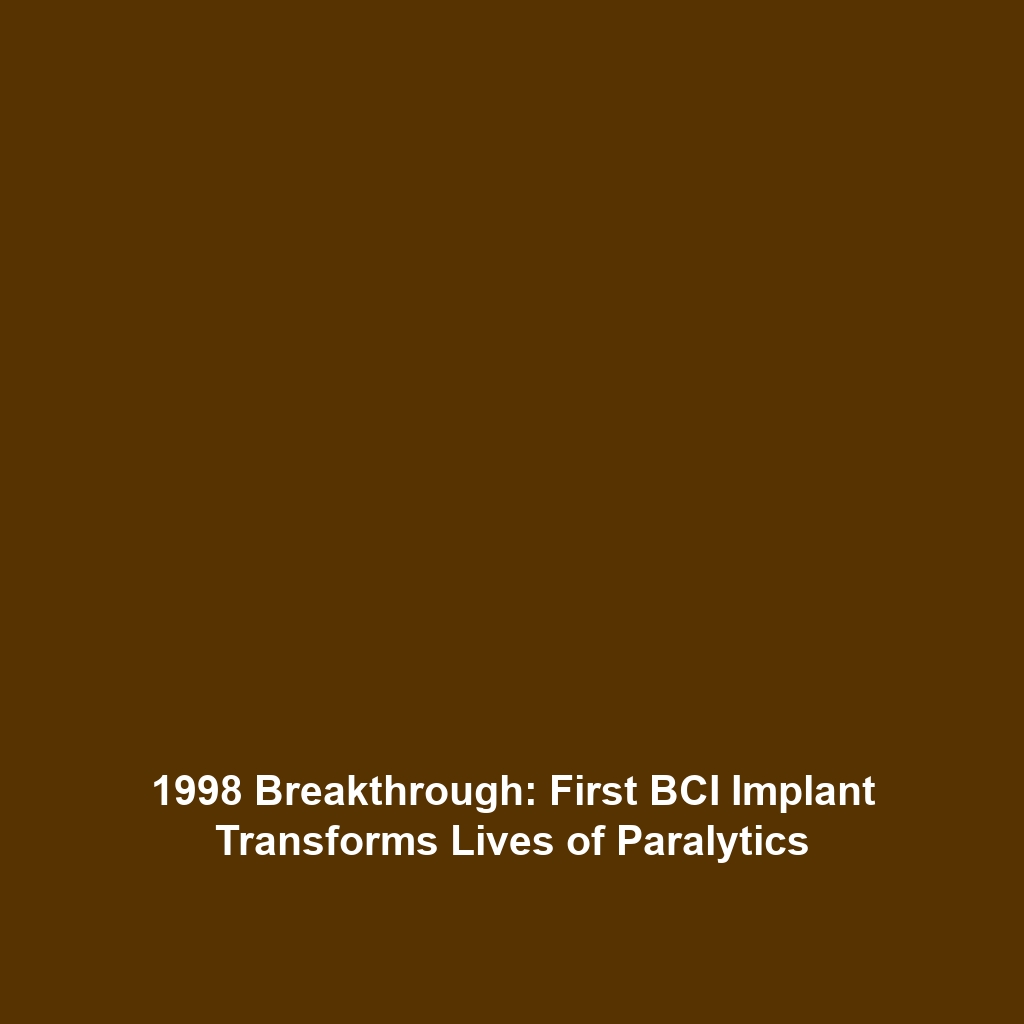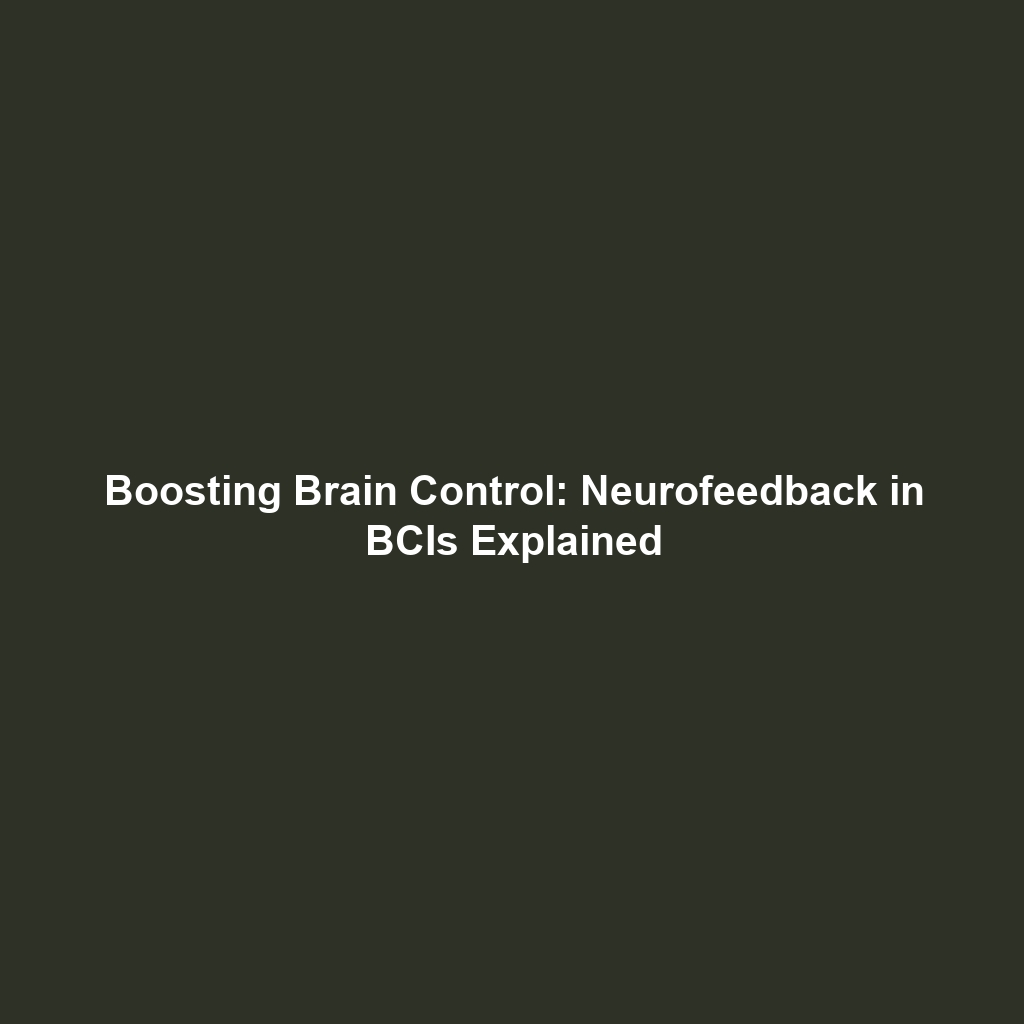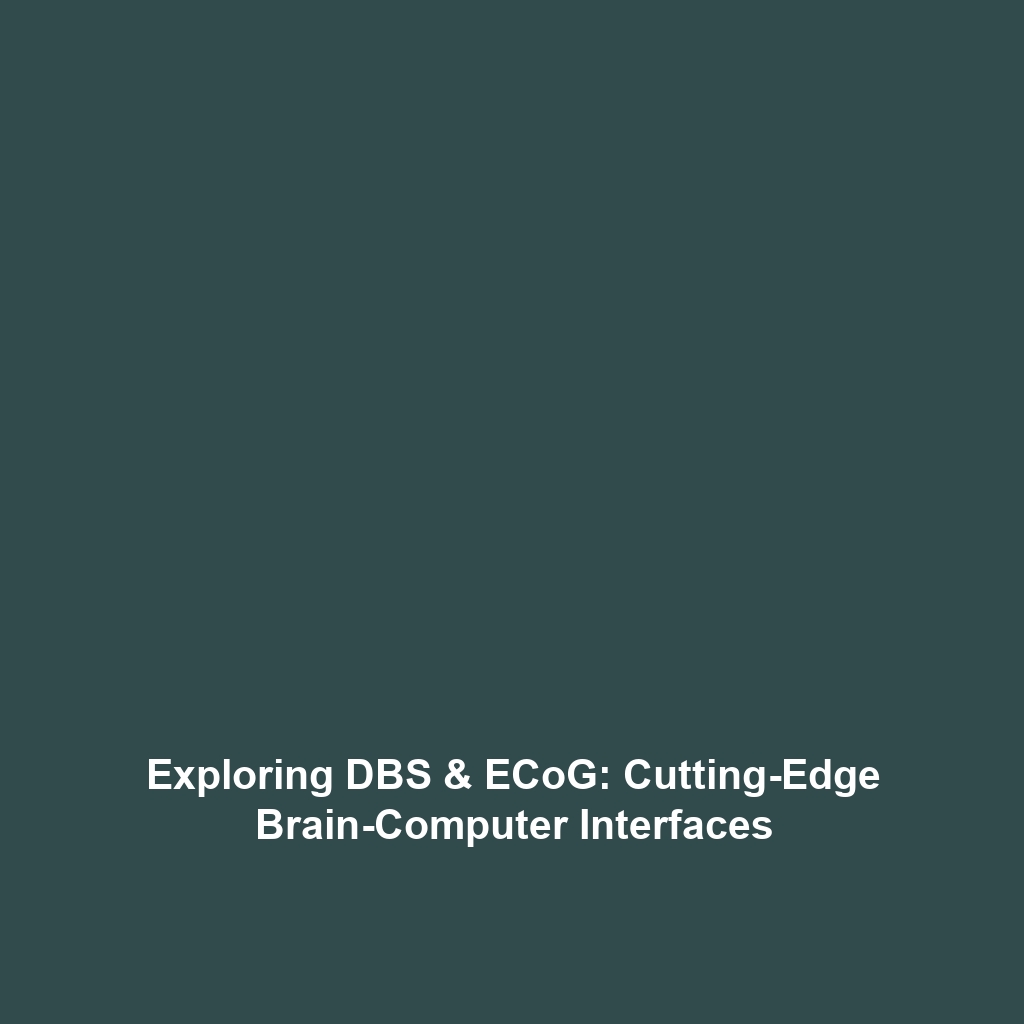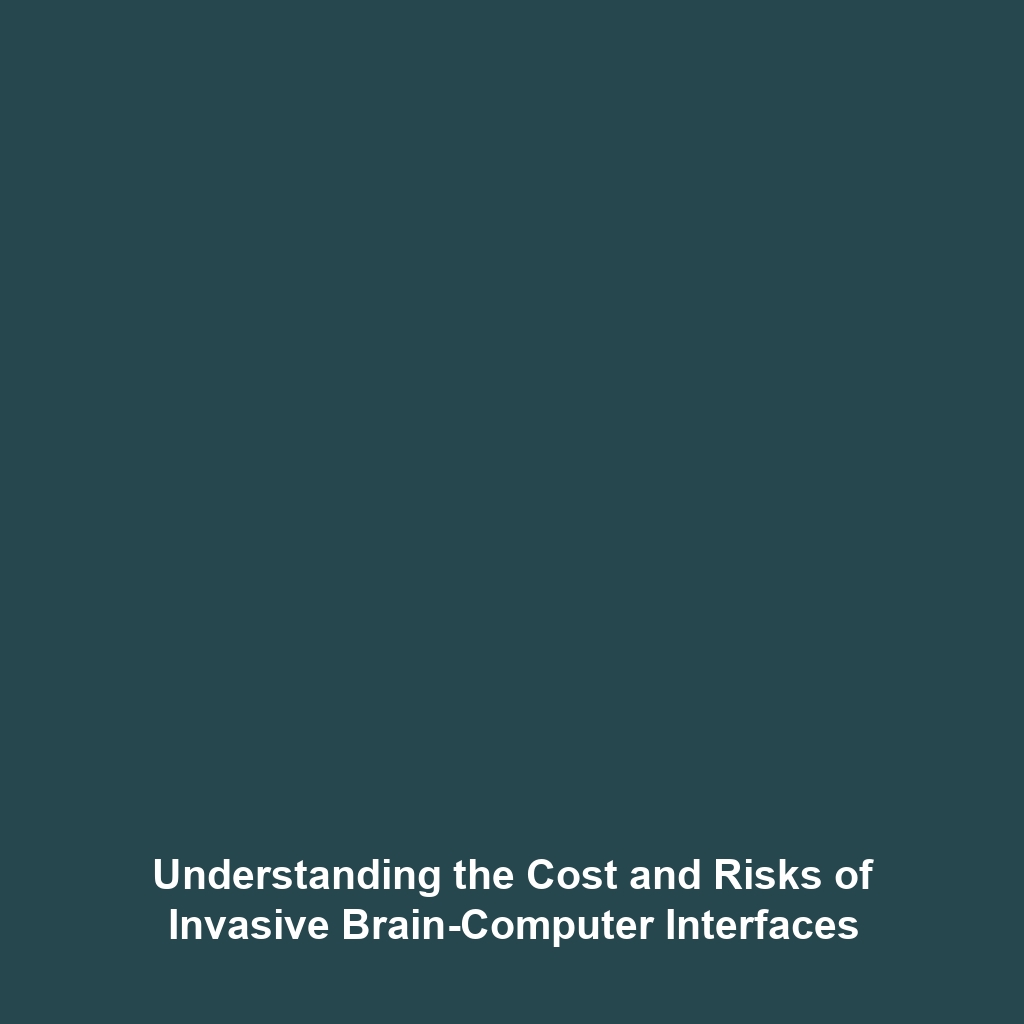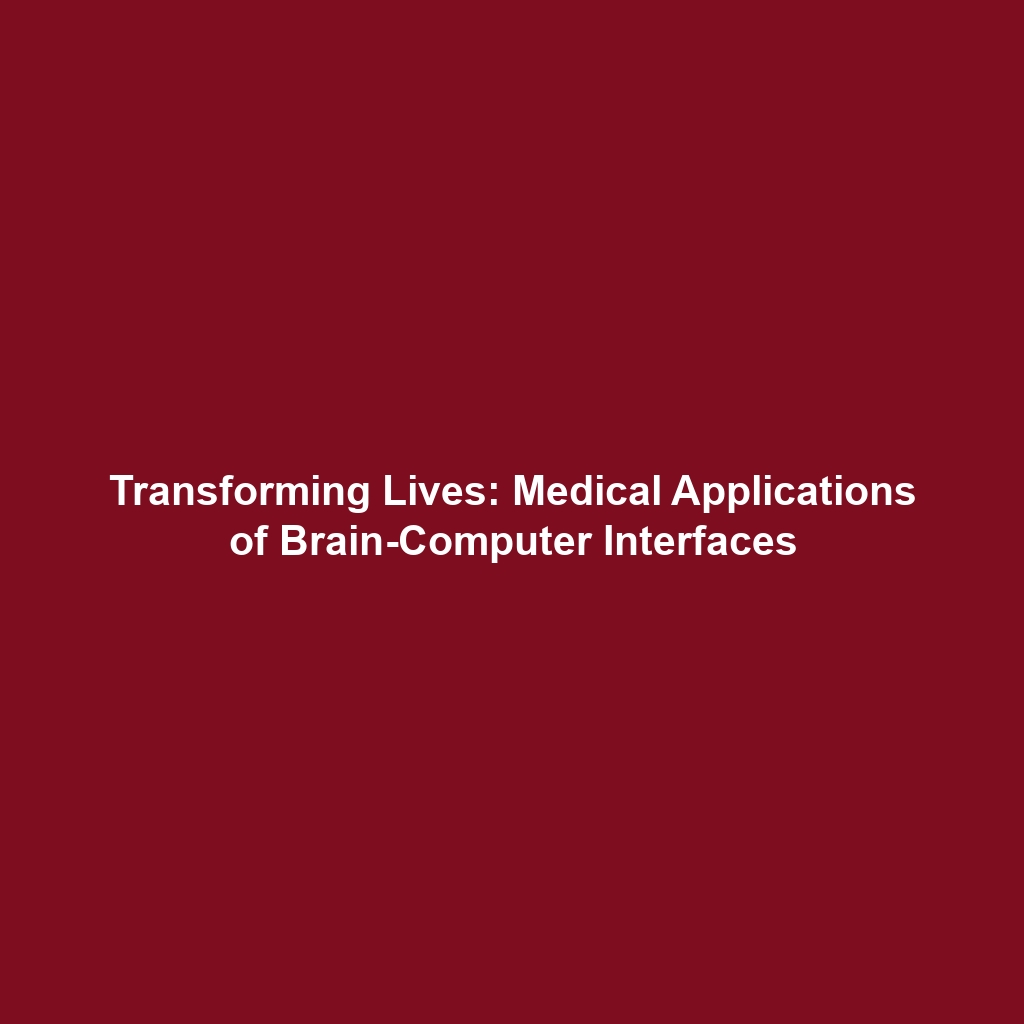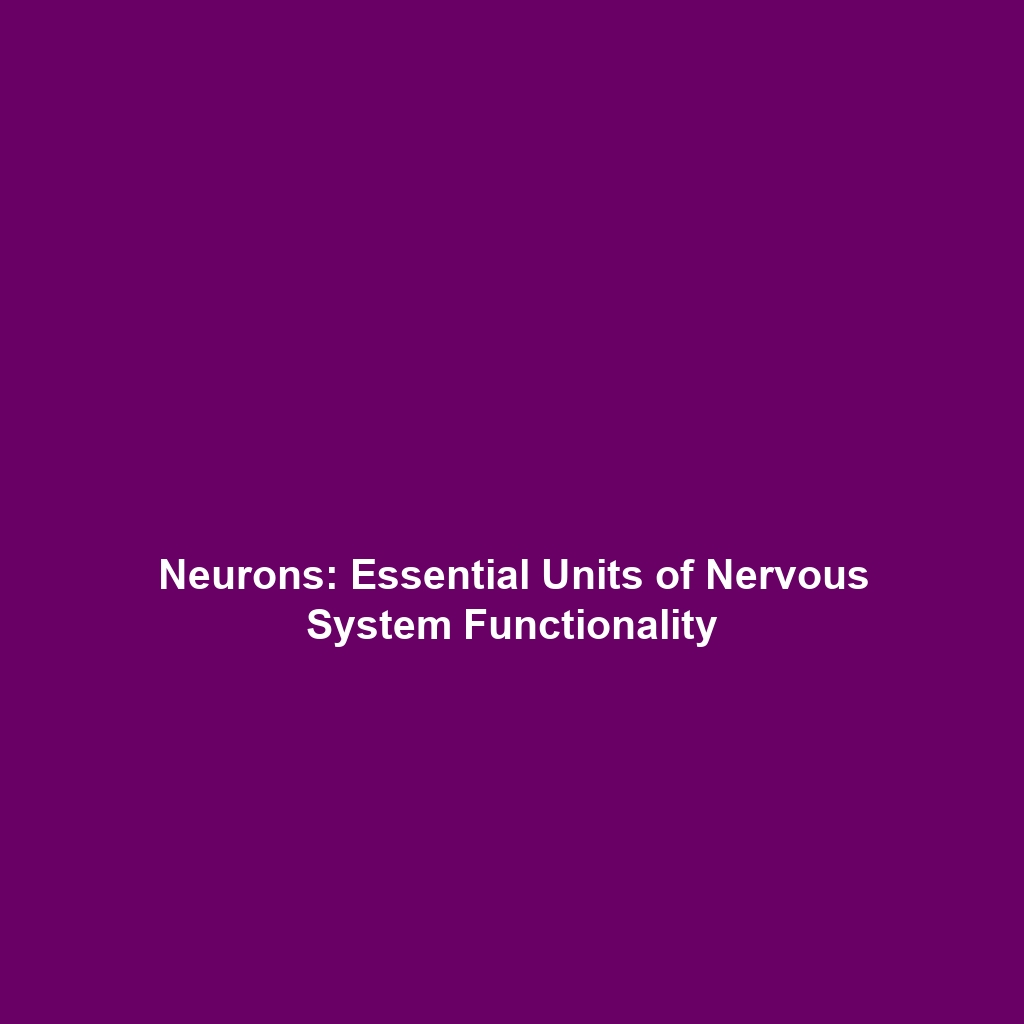Stroke Rehabilitation: Enhancing Recovery through Brain-Computer Interfaces
Introduction
Stroke remains one of the leading causes of long-term disability worldwide, affecting millions of individuals each year. As a result, effective rehabilitation techniques are crucial in helping stroke patients regain lost movement and functional independence. One promising approach is the use of Brain-Computer Interfaces (BCIs), which facilitate neural plasticity and retrain motor control. This article explores how BCIs contribute to stroke rehabilitation, representing a significant advancement in neurorehabilitation technologies.
Key Concepts
Understanding Brain-Computer Interfaces
BCIs are systems that enable direct communication between the brain and external devices, translating neural activity into commands for computer-based output. This technology has evolved to enhance motor control and facilitate recovery in stroke patients through:
- Neural Plasticity: The brain’s ability to reorganize itself and form new neural connections, crucial for recovery after a stroke.
- Motor retraining: Techniques employed within BCIs to help patients regain control over their movements.
- Real-time feedback: Providing stroke patients immediate responses from their brain activity, essential for learning and adapting movements.
Applications and Real-World Uses
BCIs have numerous applications in stroke rehabilitation. Notable examples include:
- Robotic Rehabilitation Devices: BCIs can control robotic limbs to assist patients in performing movements they could not initiate themselves.
- Virtual Reality Environments: Integration of BCIs with VR allows patients to engage in gamified rehabilitation exercises, making therapy more engaging and effective.
- Brain Training Programs: Personalized training regimens based on individual brain activity, enhancing motor recovery through targeted practice.
These applications exemplify how BCIs are transforming stroke rehabilitation within the context of Brain-Computer Interfaces.
Current Challenges
Despite the advancements in BCIs, several challenges persist in their application for stroke rehabilitation:
- Cost and Accessibility: High costs may limit the availability of BCI technologies to a broader patient population.
- Training Requirements: Effective use of BCIs often requires specialized training for both practitioners and patients.
- Technological Reliability: Ensuring consistent performance and accuracy of BCIs can be challenging, impacting treatment outcomes.
Addressing these issues is critical to maximally leverage the potential of BCIs in stroke recovery.
Future Research and Innovations
Ongoing research aims to overcome existing challenges and enhance the efficacy of BCIs in stroke rehabilitation. Key areas of development include:
- Advanced Neurofeedback Techniques: Improving real-time feedback systems to enhance patient engagement and response.
- Machine Learning Algorithms: Utilizing AI to better understand and predict patient progress, tailoring interventions accordingly.
- Integration with Wearable Technologies: Developing wearables that can monitor brain activity during daily activities, providing insights into recovery outside clinical settings.
Such innovations promise to reshape the landscape of BCI technologies in the near future, offering new hope for stroke rehabilitation.
Conclusion
In conclusion, the use of Brain-Computer Interfaces in stroke rehabilitation is redefining patient recovery by facilitating neural plasticity and retraining motor control. As research continues to evolve, BCIs hold the potential for more personalized, effective rehabilitation strategies. Stakeholders in healthcare and technology must collaborate to overcome current barriers and ensure these innovations reach those in need. To learn more about related advancements in neurorehabilitation, explore our articles on Neuroplasticity and Robotic Rehabilitation Technologies.
